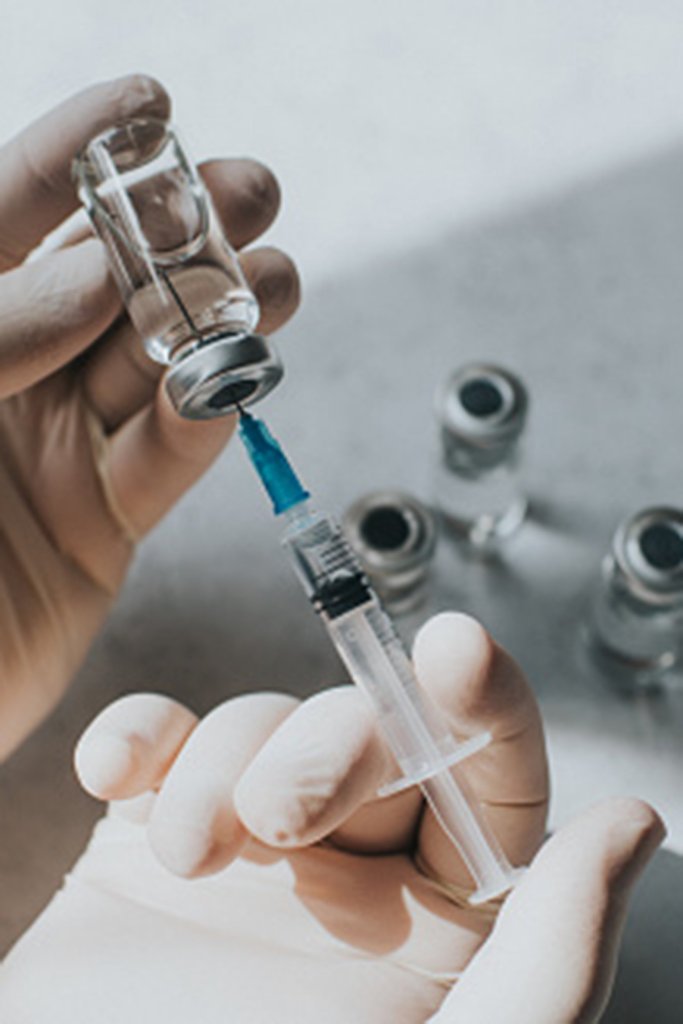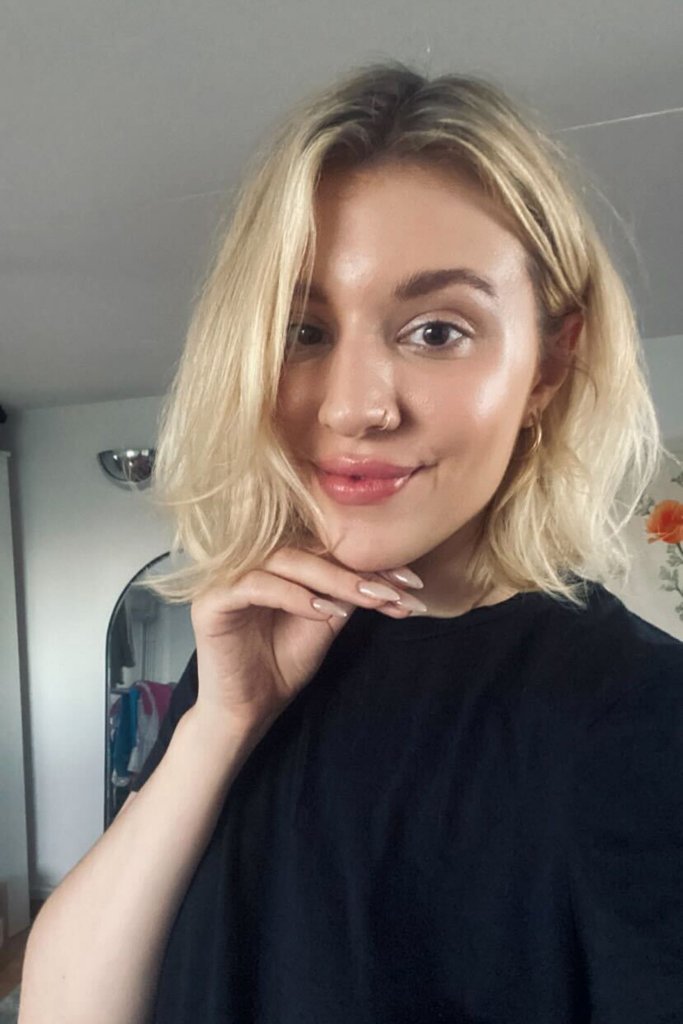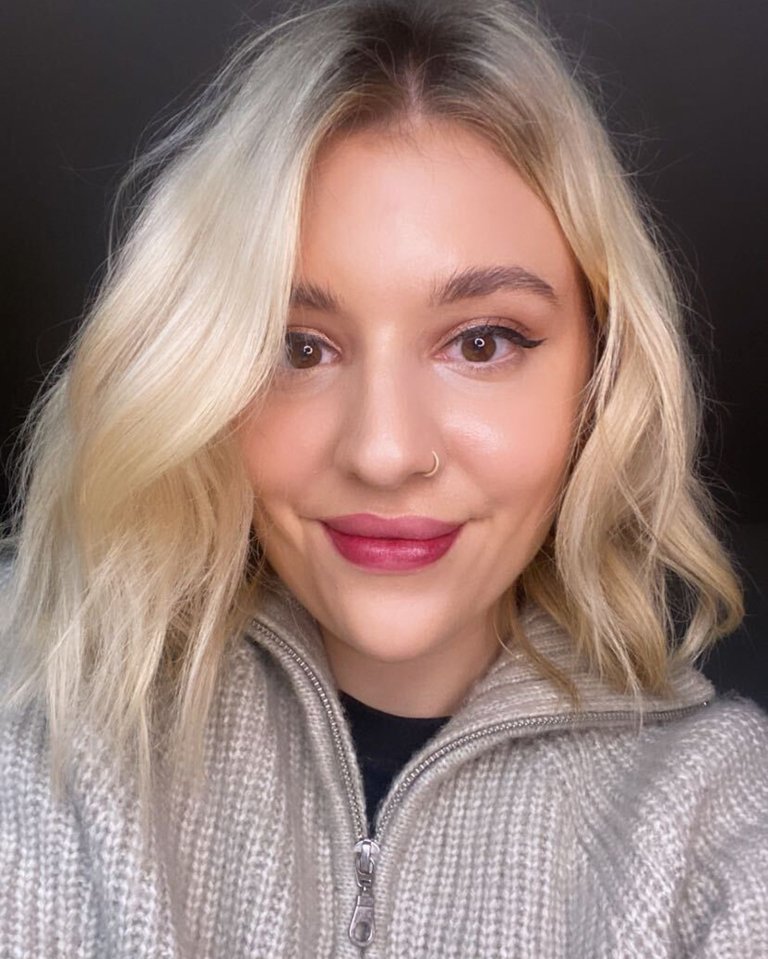I first started having fillers in 2020, after years of um’ing and ah’ing over how I felt about cosmetic procedures. On the one hand, I was keen for a bit of a boost in my upper lip, which had always been fairly thin in comparison to my lower lip. On the flip-side, I had this real bug-bear with the thought of caving to societal pressure and risking ‘looking like everyone else’.
Fast forward three years, and I’m thrilled I took the leap – I feel super confident and happy in how I look, and because I found the right injector for me and went very slowly and subtly, I still ‘look like me’ and am often greeted with surprise when telling others I’ve had a little ‘work’ done.
My filler is injected into my upper lip to balance my lips, as well as a little in my chin to bring it forward in line with my nose, which I’ve always felt stuck out. This is called ‘face balancing filler,’ and involves being injected into a range of areas – from lips and chin to cheeks and nose – dependant on each face.
What can I expect from my first fillers appointment?
I feel like I know a lot more information about the process now, which looking back would have been helpful when making my decision. For this reason, I’ve revealed the three biggest things I realised through experience, which I think may be useful to others.
Read next:
- Your ultimate guide to Botox, from where to get it done to how much it costs
- The lowdown on fillers: essential things you need to know, according to a doctor
- Mesotherapy review for under-eye circles: everything you need to know
Remember, the decision to get fillers or Botox is entirely your own, and finding a quality practitioner is incredibly important.
You don’t actually need numbing cream
The number one thing you’ll likely be nervous about when going for your first fillers appointment is how much it’ll hurt. The thought of getting a full on NEEDLE stuck into the skin on your face (especially your lips) is enough to freak out even the bravest of flu jab recipients among us.
But they use numbing cream so you don’t feel a thing, right? Well, sort of.
The first few appointments I had, numbing cream was indeed applied, and this is of course an option offered by most clinics and specialists.

But you don’t actually need to have it, especially if you’re feeling extra brave or are short on time. You see, numbing cream takes a good 20 minutes to kick into action, prolonging your appointment and often adding an extra boring step into the process (and one where you can’t talk or open your mouth).
Plus, your first injection usually contains something called Lidocaine, which is a local anaesthetic that then numbs the area for the remainder of the treatment (check with your doctor first, as some types of filler do not, whereas others like RHA by Teoxane do). So all you really need to get through is the first one – and that’s what those little stress balls (and some internal swearing) are for, right?
The initial results are not to be trusted
I’ve become rather good friends with my lovely doctors (Dr Wassim and Dr Hall of the Taktouk clinic), and most times I go to see them, somebody usually makes a joke about how much of a worry I get myself into every day for about a week post-treatment.
This is because the initial effects of treatments like lip filler are not to be trusted; you can experience lumpiness, lopsidedness, bruising and swelling, all of which can skew what you think the final result will look like.
Like clockwork, pretty much every time I visit my doctors, at least one of them will receive a frantic WhatsApp 24 hours later explaining something is wrong. I’m usually urged to just give it a few days before jumping to any conclusions: sage advice that usually turns out to be true when I realise everything has corrected itself.
Fillers can take up to two weeks to properly ‘settle’, so give it time before getting on the phone. That said, if you do have concerns or something looks or feels wrong, always contact your injector to double check.
Going slow and steady is definitely better than all at once
You may have heard this one, but it’s definitely worth adhering to. One of the nicest compliments I get about my fillers is how subtle they are, which is a testament to how amazing Dr Wassim and Dr Hall really are. One of the reasons they turned out so well is because we took our time with how much filler went in; slow and steady wins the race in this case.
Don’t go into your appointment with an idea of how many ‘ml’ you want put into your lips; a consultation with a quality doctor will help you fine tune your intended outcome, which often doesn’t simply come down to a chosen amount.

Start very small, see how you feel, and go back for a check-up around two weeks later (which clinics should offer as part of your appointment price), when you may want to try a little more.
Injecting a load of filler into your lips, cheeks or chin all in one go rarely ends well, especially if you’re after a very subtle effect.
Want to know more about how to find a quality injector, as well as about everything from costs to pain levels? Check out my full fillers guide.










